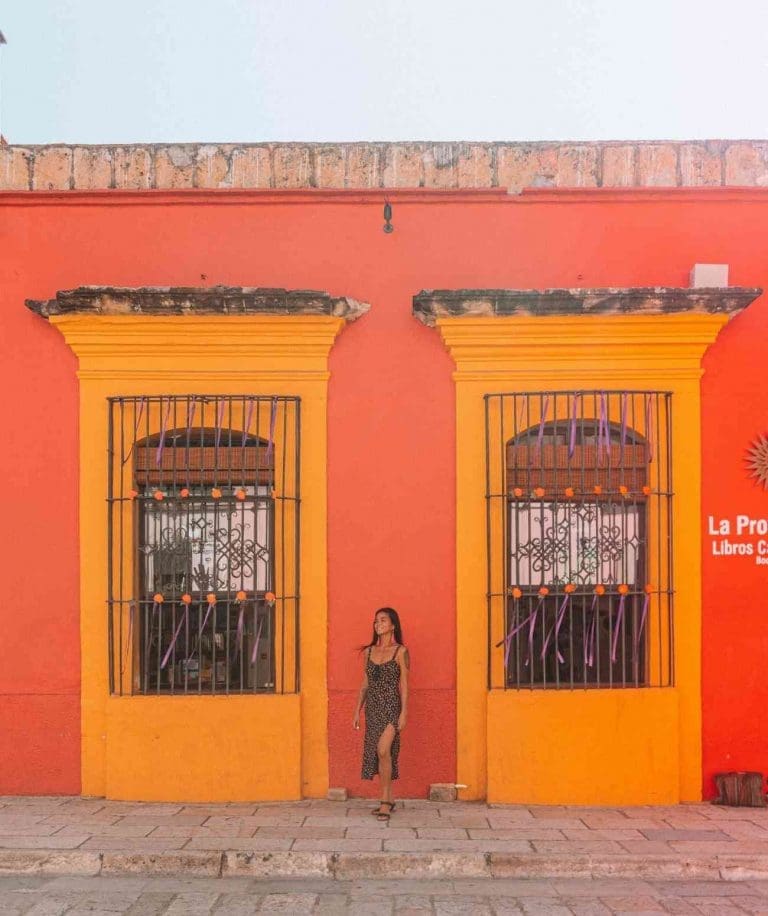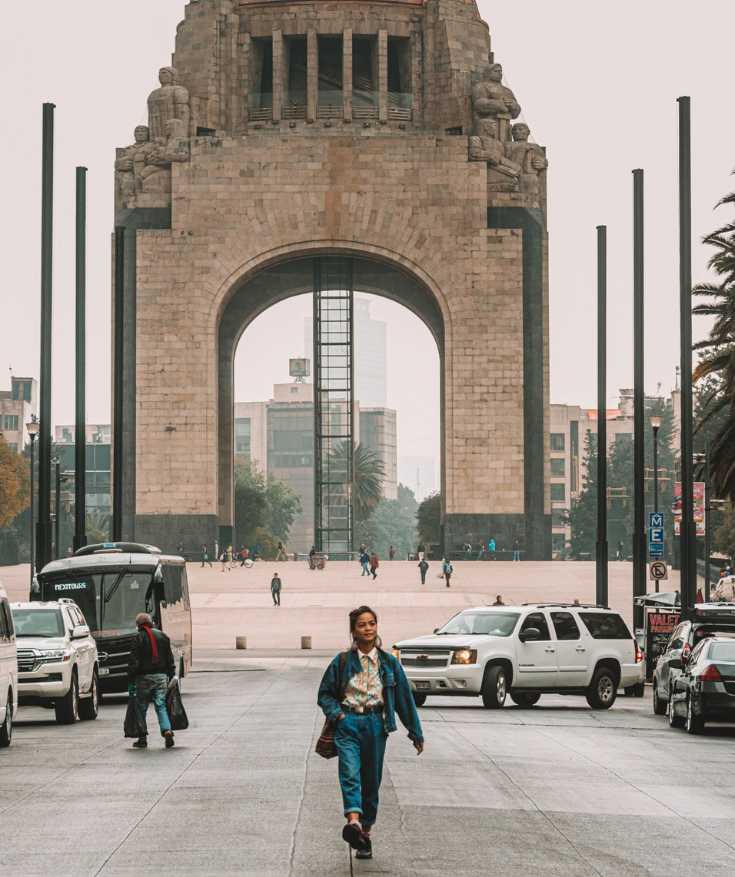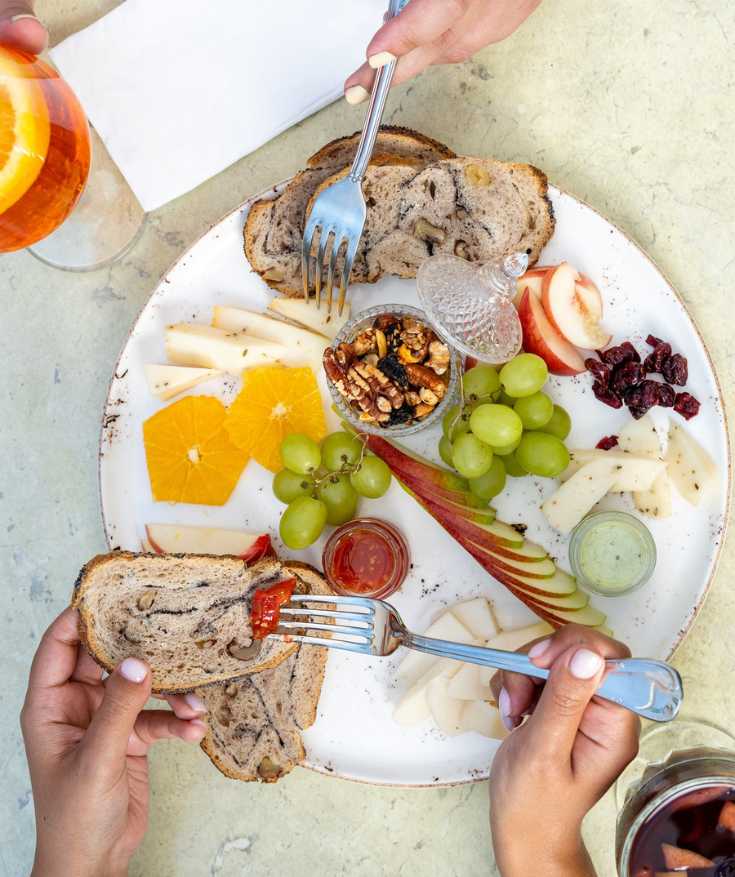What to eat in Baja California Sur, Mexico: the great northern food adventure
The Baja California peninsula is a combination of arid deserts and aquamarine waters. The weather conditions and the type of land that they have made it difficult for them to produce food.
There is a lot of history about how Baja California’s food came about but I’d like to focus on the coastal influences from Sonora and Sinaloa. In these two states, Mexican coastal food originated.
1930s was a good time for the economies of Sonora and Sinaloa. Their agricultural businesses totally exploded. Dams were built to irrigate the lands which attracted Spain, Germany, Japan, China, Italy, and the United States to explore the peninsula. This wave of immigration contributed to today’s Baja California’s culinary landscape. It was a total mix of cultures.
The people of Sonora and Sinaloa discovered Santo Domingo Valley’s potential for agriculture so they went all the way north and brought their food traditions with them. Mexican coastal influences with European and Asian touches created what we now call the Southern Baja California cuisine.
What to eat in Baja California Sur, Mexico
#1: Clams
Clams on the boat, clams on the brick oven, clams in restaurants. It was a clammy trip.
Clams are Baja California Sur’s seafood candy. You will often hear locals say almejas de chocolatas… Almejas is the Spanish word for clams, take note! The first time I heard the word almejas de chocolatas, chocolates and sweets were the first words that came in my mind. It didn’t make sense tho – chocolate and clams? How is that possible? Apparently, the result of this name is from the shells’ brown color. They don’t necessarily have a chocolate color.
I did have clams in all the places I’ve been to but everything was prepared in different ways. Let’s highlight the two places I’ve been to:
First is Doña Carmen’s family recipe. This restaurant is very Mexican and its menu is filled with lots of seafood options. However, I came here to see how Doña Carmen makes the clams from the brick oven.
First, the clams are buried in a bed of stones. Then the oven is filled with an edible shrub from the deserts of Baja Sur called romerillo.
After that, all I saw was fire.
Clams cook like popcorn but some cook faster than others. In Baja California, I’ve seen how they serve clams in restaurants within 5 minutes but this one took longer. But when it came to our table, WOW, WOW, WOW. This recipe is typically served with warm flour tortillas and a variety of salsas but I had it by itself. It was really dry as the usual clams that I had are topped with butter and lime at the end.
The most distinguished taste I found here is the charry flavor, mostly because it was cooked for a longer time and there were lots of fire involved. Then there were the clams from the catamaran cruise which I’ve actually seen alive.
First, the dude separates the clam meat from the shell. I was really admiring the oven on the boat. It looks so simple and yet expensive. I’ve actually never seen a boat with an oven. Until I got distracted with HAM…..
Yes, clams topped with HAM. These guys topped it with ham and after 5 minutes, I was drowning in ham clams.
RELATED POST (VIDEO): MEXICO CITY LATE-NIGHT EATS
Tahong (mussels) in the Philippines. / Photo: Panlasang Pinoy
Where I am from, we have this version and we call it tahong. Nothing fancy. We just boil it in water. But growing up, I was told that eating too many clams is bad so I consulted a few people on Instagram and asked: is too many clams bad?
Research says “too much of anything is bad,” so that’s a no. I felt that it was okay to eat that amount of clams that I did. But anyway, if you do have any information about it, I would love to hear your thoughts in the comment box below.
#2: Quesadilla de Pulpo
If you’re a fan of octopus delicacies, then this is for you. I do not like eating octopus. My only exemption is Takoyaki from Osaka. When you enter the taqueria in La Paz, this was the one that had big posters and advertisements so I figured it’s the house special. Even though I had no plans of having octopus on this trip, I ordered the octopus taco
You will not get a plain octopus from the grill because they serve them with a default sauce that you cannot order on the side. This sauce usually is made from chile de arbol, chile mirasol, chile guajillo, chile cascabel, and tomato.
Due to its saucy and thick texture, I didn’t know if there was a need to put salsas so I tried it on its own. I felt a little kick of the achiote paste but the guy who explained how they do this sauce didn’t mention anything about the most-common used Mexican paste.
#3: Machaca
This is the only non-seafood dish from Baja California Sur that I tried (although there are many. I just chose to stick with the seafood on this trip). It’s also the dish that I look forward to the most! People I talked to in Nayarit (where I live) were all raving about it!
Machaca’s common meat is beef or pork. Ingredients vary, depending on who’s making it but it usually consists of onions, peppers, tomatoes, and chilies. The meat is usually dried/rehydrated and rolled like a burrito. Some people use skirt steak and is usually slow-cooked.
Today, especially in the USA, machaca can be bought (ready-made) in grocery stores and supermarkets. My friends from Nayarit even told me to buy some but I wasn’t sure if supermarket machaca is also a thing in Baja California Sur.
I didn’t bother to go to the supermarkets, sorry! I will investigate on my next trip to Baja Sur so stay tuned!
#4: Ceviche
So, this is the grand question for this video: Is ceviche Peruvian or Mexican?
Peru was my first real experience with ceviche but when I came to Mexico, it seemed like a staple too. I live in the Bahia de Banderas in the state of Nayarit and ceviche is a staple. They have it everywhere!
Personally, I feel like both ceviche versions are great. The difference between these two styles is the amount of time the fish is left to marinate in lemon. Mexican ceviche recipes generally recommend a much longer marination time while some Peruvian chefs leave the fish in lime juice for as little as a minute.
I asked on Instagram stories where ceviche is from and people voted differently. Mexicans voted Mexico, and of course, Peruvians voted for Peru.
To get over this debate, I consulted Google and literally asked: where is ceviche originally from? This is what I found out.
Anyway, back to Mexican ceviche: the most common observation I saw in Baja California is they use shrimps a lot. In Mexico, it is served either in cocktail cups with tostadas, or salted crackers. They also serve it in a cup with tomato sauce which we call the ceviche cocktail.
It is very popular all over Mexico no matter how unusual it sounds for the south. Shrimp, octopus, squid, tuna, and mackerel are also popular bases for Mexican ceviche.
Mayonnaise on ceviche: a Baja California tradition
This is not new to me since one of my best friends in Nayarit is from Baja. He puts mayonnaise on his ceviche all the time – it doesn’t matter if he’s in Baja Sur or not. But for most of you, this must be weird: citrus flavors with mayonnaise? How odd could that be?
This gets interesting as Mexico is not the only country that puts mayonnaise in their ceviche. In Costa Rica, they even put ketchup! I’ve never seen this trend in Peru, by the way. From living in Mexico, I found how Mexicans are into sweets. When I ask people why they put mayo or ketchup on their ceviche, they always say that it balances the citric flavors of ceviche – you need something sweet to go with it.
True enough, when I tried it, it wasn’t that bad. It really does put a sweet punch on the ceviche. I just don’t think I’ll do it a lot. Not only that I love the flavors of ceviche but I am also very impressed with the process of making this dish.
#5: Baja-style fish taco
Baja-style fish taco has a lot of history but it is believed to have originated from Ensenada. There is also evidence that it first came to the peninsula during the Japanese fishermen’s immigration in the 50s and 60s, which I truly believe to be is true because Baja-style fish taco is very similar to tempura.
What’s unique about the Baja-style fish tacos is that are battered crispy. It is accompanied by chipotle sauce made by combining the chipotle peppers in adobo sauce, mayonnaise, lime juice, and garlic. You will never find this style in other coastal towns in Mexico. However, you can find this fish taco everywhere in Mexico.
SEE ALSO: SAYULITA, MEXICO VEGETARIAN FOOD GUIDE
The peninsula of Baja California is rich in marine life and biodiversity. Their cold waters is also a sea creature’s favorite. Most people eat fish tacos without knowing what kind of fish was used but let me tell you all the types of fish that I encountered on this trip.
In Nayarit, dorado is the most common type of fish used in making Baja-style fish tacos. Loreto does the same. It appears to me that the fish they use depends on the area. For example, in Mulege, jurel (Atlantic horse mackerel ) and California corbina are common.
Other types that I encountered include cabrilla (Baja-style fish taco has a lot of history but it is believed to have originated from Ensenada. There is also evidence that it first came to the peninsula during the Japanese fishermen’s immigration in the 50s and 60s, which I truly believe to be is true because Baja-style fish taco is very similar to tempura.
What’s unique about the Baja-style fish tacos is that is battered crispy, then topped with cabbage. It is accompanied by chipotle sauce made by combining the chipotle peppers in adobo sauce, mayonnaise, lime juice, and garlic. You will never find this style in other coastal towns in Mexico. However, you can find this fish taco everywhere in Mexico.
The peninsula of Baja California is rich in marine life and biodiversity. Their cold waters is also a sea creature’s favorite. Most people eat fish tacos without knowing what kind of fish was used but let me tell you all the types of fish that I encountered on this trip.
In Nayarit, the dorado is the most common type of fish used in making Baja-style fish tacos. Loreto does the same. It appears to me that the fish they use depends on the area. For example, in Mulege, jurel (Atlantic horse mackerel ) and California corbina are common. Other types that I encountered include cabrilla (comber) and bonito.
Many fish tacos all over the country contain shark meat which is obviously not very sustainable. It is illegal and Mexico however, shark hunting is not regulated in the country. It’s best to know the type of fish before ordering your fish taco! Know what to support and find out if its sustainable.
#6: Manta Ray burrito
I have never eaten manta rays before and I didn’t think that this is a thing in Baja. I was really torn if I should try this but in the end, I did not, as I am a supporter of marine life: we only eat what we are allowed to eat and so far, the manta ray is on the list of endangered species.
The guys at the taqueria opened this for me even if I didn’t eat it.
I did not deeply investigate the sustainability of it all (in this area) but what I know about eating manta ray: they are bad. As a diver, I’ve been very fond of watching manta rays under the sea (they are really nice and calm creatures) so I never really imagined myself eating them. It just doesn’t sound like the most appetizing sea creature for me.
According to Manta Ray World, ‘the two species of manta ray are currently threatened, listed as “vulnerable” in the Red List of the International Union for Conservation of Nature (IUCN). This organization states that the main threat is fishing manta rays incidentally and directed.’
Whether you want to eat manta rays or not, it’s up to you! I eat a lot and I love discovering the different cuisines in Mexico but I only support the sustainable ones.
#7: Quesadilla de Marlin
This is the first time I am trying marlin quesadilla. While chatting with the taqueros in La Paz, I asked them what is their best-selling quesadilla and they recommended marlin. Marlin is very firm and has a steak-like texture. The exaggerated amount of cheese made a perfect combo.
Marlin has high levels of mercury which can be very bad for our health. They are on top of the food chain so they are loaded with toxins. I definitely enjoyed trying it for the experience, and to know how it really tastes like but if you are pregnant, do not eat marlin. Mercury is really bad for humans.
There are many other things to add in this what to eat in Baja California Sur article but I just don’t want to include those I didn’t personally try. I will be doing another trip with the Loreto Tourism Board in early 2021 so I will keep this post updated! Overall, my one-week adventure of eating in Baja California Sur has been a blast. I will definitely come back and explore more of its cuisine.







I’d like to do a food tour of the entire area. All of this food looks amazing. I want to try those manta ray wraps.
I didn’t try the manta rays – they are endangered species! Let me know when you visit Mexico!
Every single thing looks so delicious. It’s been way too long since I’ve had clams. YUM!
All I had on this trip were clams!
All of this food looks so amazing and so yummy! I would love to try all of this!
Very true Baja California del Sur is to be discovered, full of beauty and goodness I have been to Loreto and its surroundings and I must say that I felt like I was out of this world. A dream!
This all looks so flavoursome. I love clams. Now to be allowed out for a holiday, I’ve never been to Mexico.
Every food that you’ve shared with us looks really and tasty. I already ate some of these but I am so curious about the taste of Ceviche. I wish my mom can do this for me. lol!
Wow wow wow. This is such an in-depth article. I’m a foodie so everything food related is high on my preference list. I saved all the list, I’m gonna try them for sure when I’ll be back to Mexico
I think it would be really fun to visit Baja California. The food looks amazing! Those fish tacos had my mouth watering, one of my favorite tacos to get!
I love a good fish taco or some ceviche, but I have never tried the clams in Baja. I’ll have to try them next time I’m there. I really like your video content, it’s inspiring!
I LOVE Chocolate Clams! I had these on Loreto a few years ago and every clam I have had since has suffered by comparison
I haven’t been in Baja California yet. The clams look so tasty! Can’t wait to try them! So good!
Oh my Gosh, Trisha! I would starve in Baja California if that’s all they have. The only thing I could eat from your list is the Baja-Style fish taco, but none of the rest. I am very allergic to sea food, except some kinds of fish. I am planning to go there next spring, so I hope I’ll find something that I can eat, lol!
This list presents a tough choice for the vegetarians! I would really starve for sure in Baja California. I have not tried any of these dishes!
This is such a sinful post Trisha ! Being a foodie, I would love to try out all the dishes you’ve listed out, specially the Clams and Octopus, though I am unsure about trying out the Manta Ray, as after all they are our co workers in the Scuba Diving Industry ! Definitely bookmarking this for reference, for when I get to visit the States in the future !
That’s a lot of famous delicacies of Baja you have noted here. I am amazed at the different types of seafood they use in almost all the dishes, starting from clams to Manta Ray. Is there any vegan option as well?
Your photos and your post make my stomach rumble. I loved seafood, oysters, mussels, and prawns. I love fresh ceviche, tacos, and quesadilla. So, Baja seems to be a culinary paradise for me. I would love to taste all these flavors you described and showed in your photos.
Clams and ceviche are literally 2 of my favorite foods to eat! The freshness of what you described are reason enough to make a trip here one day!
Hi – the first photo had me – ceviche! I’ve been to Mexico many times and one thing that really stands out for me is the freshness of the food compared to the US. All fresh, non-processed. And, ceviche in Mexico is heavenly…. Nikki
I would like to visit California Sur, Mexico – it’s a very interesting place in regards to the history and economy. I’d like to see this culture-influenced peninsula, especially of the Germans! (My soon-to-be husband is German! Hehe) Sooo much fooods, I am drooling for BAJA-STYLE FISH TACO (!!!!) and the CLAMS (yummy) mmmmm and I think our very own tahong is also of great worth! ;D
Ceviche is a must but I am not sure about mayo. I definitely love Baja tacos.
Clams topped with ham! Wow, what a brilliant idea. Okay, so generally, I am a big lover of sea food and Mexican food too, though I’ve mostly just had the usual stuff like quesadillas and burritos. I would love to have a ham clam trip in Baja California Sur. They look delicious. Also, a big fan of ceviche, topping it with mayo sounds like a pretty cool idea too! I have tried Baja style fish tacos but not in Baja, so I am sure it’ll be an authentic, much yummier experience in Baja itself. I know I am gonna love the food there!